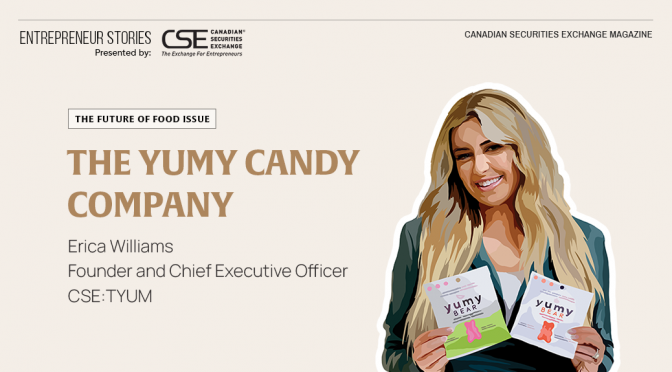Former Chicago Blackhawks enforcer Daniel Carcillo spent much of his NHL career getting inside the heads of opposing teams, making sure they knew that if they crossed a certain line, things could go sideways.
Today, Carcillo is an entrepreneur whose mission is, for all intents and purposes, the opposite of what he did on the ice. Instead of contributing to head injuries, he now seeks to heal them.
The transition from hard charging two-time Stanley Cup winner to source of hope for people with mental health challenges began in 2015 when a seventh diagnosed concussion forced Carcillo into early retirement. At age 30, he entered the most emotional and anguished time of his life.
Years of fierce competition, and having his body repeatedly slammed into the ice, the boards, and competing players, resulted in Carcillo suffering traumatic brain injury (TBI). The undercurrent of anxiety and depression during early retirement got so bad that Carcillo, a husband and father, contemplated suicide.
He spent five years trying different concussion treatments, spending hundreds of thousands of dollars in the process. But it was all for naught. Carcillo found he was no closer to improving his brain health and quality of life. He hit rock bottom.
Then in 2019, hallucinogenic mushrooms helped him begin to turn things around. The experience compelled him to start a new journey assisting others suffering TBI-related symptoms. Athletes, soldiers, domestic violence victims and people recovering from serious accidents are among the many types of patients in need.
Healthy once again and with a new team to lead, Carcillo is Co-Founder and Chief Executive Officer of Wesana Health Holdings (CSE:WESA). His mission with Wesana is to revolutionize the way neurological health and performance is treated through personalized medicine and bringing the promise of psychedelic drug-assisted therapy to the masses using psilocybin to treat TBI and migraines. His company is also working with ketamine through their Wesana Clinics and is in partnership discussions with the Multidisciplinary Association for Psychedelic Studies (MAPS) to explore the use of MDMA to treat TBI.
“Two and a half years ago, when I was suicidal and in my darkest moments, I used psilocybin in a really responsible setting,” Carcillo explains. “I was able to experience just an amazing recovery. And since then, we have found ways to establish Wesana with an outstanding team. We have this innovation that we think will help millions of people.”
Research suggests that psilocybin can create new neurons and new neural pathways in the brain, stimulating concussion-affected areas and reversing destructive, habitual thought processes. In Carcillo’s case, he started a regimen that includes occasional large doses of the hallucinogen and regular non-hallucinogenic doses, which are helping to produce normal brain scans and bloodwork.
“You can rewire the brain, break up destructive thought patterns and then create new, positive ones,” explains Carcillo.
But he is realistic about the challenges Wesana faces in a new, undefined and increasingly crowded industry that must engage in a long dance with US Food & Drug Administration (FDA) and Health Canada regulators to eventually bring life-saving products to market.
“As it stands right now, there’s no approved pharmaceutical for TBI-related symptoms. And the number one cause of death is suicide. I know it all too well,” says Carcillo.
“I also know how fragmented everything is in this space, from treatment to research. And there are so many gaps and what makes it hard on the patients is getting a diagnosis. And then number two is finding the treatments. We’re here to make as big an impact as we can to positively influence this process for survivors and make it easier on them and their families and caregivers to understand what’s going on and then get them healing.”
Operationally, Wesana heads into the latter half of 2021 with a $21 million runway and plenty of media attention, stemming partly from Carcillo’s fame and passionate advocacy for psychedelic drug-assisted therapy.
In the product development pipeline, the company is advancing its SANA 0013 through the preclinical stage studying psilocybin to treat TBI-related major depressive disorder. Wesana is making headway with the FDA, as it has scheduled a pre-Investigational New Drug (IND) meeting with regulators around year’s end, to be followed by the opening of the IND in the third quarter of 2022.
While psilocybin remains the company’s focus, it recently staked its claim in the markets for ketamine and MDMA, two drugs far ahead in the regulatory approval process. Carcillo readily acknowledges that bringing psilocybin-based therapies to market will take years, as the drug remains illegal in the US, as does MDMA. The FDA approved ketamine as an anesthetic for humans in 1970.
To further its expansion, Wesana acquired Psychedelitech (known as PsyTech) in September 2021, gaining a chain of mental health clinics that can administer ketamine therapies.
Wesana also picked up a software platform that helps clinicians track patient outcomes in real time and supports a community forum of over 8,000 professionals, many of them respected resources for psychedelic therapy protocols and clinical best practices.
For MDMA, also known as the popular recreational drug “ecstasy” or “molly,” the company has developed a partnership with MAPS, which is mulling an MDMA-assisted therapy program to treat TBI. Wesana has committed to provide an initial US$1.5 million to assess the program’s viability and might establish a joint venture with MAPS.
MAPS’ research has primarily focused on MDMA-assisted therapy for post-traumatic stress disorder (PTSD), an affliction common among soldiers that causes similar mental health symptoms and outcomes as TBI. MAPS says current FDA-approved Phase 3 trials have demonstrated an 88% reduction in PTSD symptoms among participants.
“Using this medicine, MDMA can help alleviate that emotional spike during conversations, so it’s easier to deal with trauma,” says Carcillo, who envisions teaming with MAPS to create a “gold standard” of clinics. “Think of it in the context of why it worked so well for PTSD. And so for TBI, that journey is no different.”
Laying the groundwork for an even deeper understanding of TBI, Carcillo says Wesana has formed partnerships with the World Boxing Council (WBC) and the University of South Carolina as it seeks methods to prevent, or at least minimize, TBI-related damage during boxing matches and other athletic competitions. Wesana will also be using the RESOLV lab to phenotype the TBI patient population that will be participating in the Phase 2 and 3 clinical trials.
“What can we be doing as far as exercises and supplementation to better protect the brain?” Carcillo asks. “For example, when a WBC fighter knows they’re training for a fight, what can we do to better protect them? What can we implement, as far as supplements, to be neuroprotective before the fight to lessen the damage, and then train for processing speed, hand-eye coordination, reaction time, and neck strength that minimize TBI damage on the front end?”
At the university, the company plans to spend $1.5 million to establish the BrainStorm Lab, which will serve as a hub for neurological and cognitive improvement research, with an eye on developing compounds to enhance neural performance and act as neuroprotectants of the brain. The lab will also work with the US military – which has a large presence in South Carolina – on pre-battle protection and acute post-injury scenarios.
Looking ahead, Carcillo says Wesana plans to rapidly expand the acquisition of clinics and develop more partnerships while pushing along its drug development programs. Plans also include publishing two major white papers on TBI with a group of leading scientists, neuroscientists and pathologists.
Carcillo, in the meantime, continues working to maintain his mental health while remaining busy growing Wesana with Co-Founder Chad Bronstein. But there is more at stake for him on his new personal journey – he is inspiring others through advocacy, action and education.
“It’s definitely a young space, but an exciting space to really impact people, and treat their traumas rather than putting on band aids and trying to manage symptomatology,” Carcillo concludes. “You have to kind of pinch yourself some days. It’s the most exciting thing to be a part of, trying to positively impact that.”
This story was featured in the Canadian Securities Exchange magazine.
Learn more about Wesana Health at https://www.wesanahealth.com/










